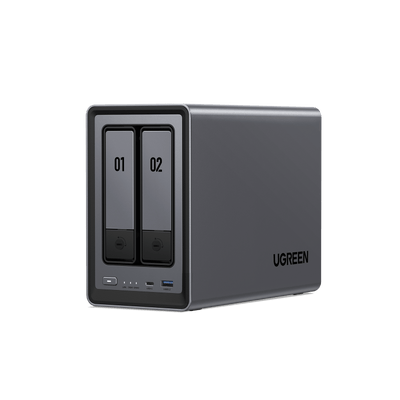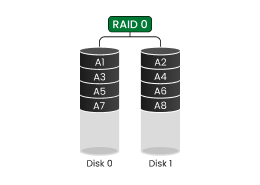Plex vs Jellyfin: Best Home NAS Media Server in 2025
A home NAS is a fantastic solution for movie and music collectors who are tired of subscription clutter. It gives you your own private media center with no monthly fees and no content that disappears overnight.
But just having raw storage isn’t enough. To bring your library to life, you need software like Plex or Jellyfin. Both can turn your storage device into a media powerhouse, but they do it in different ways. One might be better for your home than the other, depending on what you care about most: saving money, keeping things simple, or having full control over your files.

Key Takeaways
- Cost vs. Convenience: Jellyfin is free and open-source, while Plex requires subscriptions for premium features like hardware transcoding and remote streaming.
- Privacy & Control: Jellyfin stores all metadata and user data locally, while Plex integrates third-party services and collects usage analytics.
- Content Focus: Plex combines personal media with ad-supported streaming; Jellyfin focuses exclusively on user-hosted libraries.
- 2025 Pricing Shift: Plex’s updated subscription model makes Jellyfin an even more appealing option for budget-conscious users.
The Difference Between Plex and Jellyfin
Plex and Jellyfin are both media servers, but they are built on very different philosophies.
Plex operates on a commercial model. The company sells subscriptions and partners with major brands like T-Mobile and Netflix to expand its offerings. This funding allows for significant investment in creating a polished user experience that works seamlessly across a wide range of devices, from your phone to your TV. The platform may also include free, ad-supported movies and shows. As a commercial service, updates can happen automatically.
Dig deeper: How to Install Plex on a NAS.
Jellyfin is a community-driven project built on the principles of free and open-source software. It is completely free to use, and you remain in full control of your media and data. Nothing is sent to external servers unless you explicitly configure it to do so. This freedom comes with a trade-off: Jellyfin require more technical effort to set up and may not feel as polished as Plex. However, for many users, the complete privacy and control it offers are well worth the effort.

Feature Breakdown
All media servers must adjust videos for different devices, such as shrinking a 4K movie for a phone or converting a file format for an older TV. This process, called transcoding, requires significant processing power.
Media Playback & Transcoding
| Parameter | Plex | Jellyfin |
|---|---|---|
| Cost | Basic is free; hardware transcoding requires a Plex Pass subscription. | Free |
| Setup | Manual setup, often with Docker. | Manual setup, often with Docker. |
| Performance | Good with a Plex Pass; can be CPU-intensive without it. | Good with proper hardware and setup. |
Remote Access & Mobile Experience
| Parameter | Plex | Jellyfin |
|---|---|---|
| Cost | Requires a Plex Pass for full mobile playback. | Free |
| Setup | Simple remote access setup. | Requires reverse proxy setup for secure access. |
| Mobile Experience | One-minute playback limit on mobile without a subscription. | No limits once configured. |
Privacy and Safety
When you consolidate your personal media on a home NAS, you want to ensure your movies, shows, and photos remain private. Here’s how Plex and Jellyfin handle your data.
Plex and Data Sharing
Plex works with third-party services like Gracenote to automatically fetch metadata for your movies and TV shows, such as cover art and plot summaries. To do this, it sends some information about your library’s contents to these services. Plex also collects some usage analytics to improve its platform. While your media files remain on your NAS, some data about your library and viewing habits leaves your local network.
Jellyfin and Local Control
Jellyfin takes a different approach. All of your files, metadata, and watch history are stored exclusively on your NAS. No data is sent to external servers. If privacy is a top priority, this complete local control makes Jellyfin the superior choice.
{{UGPRODUCT}}
Suggestions for Use Cases
Your personal priorities will help you choose between Plex and Jellyfin.
- For a Quick and Easy Setup: Plex is the best choice. It is designed for simplicity, with official, easy-to-install apps for nearly every phone, tablet, and smart TV.
- For a Budget-Friendly Solution: Jellyfin is completely free. There are no subscriptions or hidden fees for premium features. It requires more setup time, but it’s a great way to save money.
| Situation | Better Fit | Why |
|---|---|---|
| Family streaming remotely | Plex | Simple, one-click remote access is very convenient. |
| On a tight budget | Jellyfin | The software and all its features are completely free. |
| Technically comfortable user | Jellyfin | The effort is rewarded with full control and customization. |
| Using an Apple TV or Samsung TV | Plex | The official, polished apps simply work without hassle. |
| Have strict data privacy needs | Jellyfin | Zero data leaves your NAS by default. |
FAQ: Plex vs. Jellyfin for Home NAS
Which one is cheaper to use?
Jellyfin is entirely free. Plex has a free version, but premium features like hardware transcoding and unlimited mobile streaming require a paid Plex Pass subscription.
Can I watch my media on my phone with both?
Yes. Both platforms have mobile apps. The Plex app is generally more polished and feature-rich, but the Jellyfin app is fully functional and continuously improving.
Which one keeps my information private?
Jellyfin wins on privacy, as it does not collect any of your data by default. Plex collects some usage analytics to improve its service, though this can be minimized in the settings.
Will both platforms continue to be updated?
Yes, both projects are actively developed. Plex has a larger commercial team, so updates may be more frequent. Jellyfin has a dedicated community of volunteers who consistently release new features and fixes.
Final Thoughts
Both Plex and Jellyfin can transform your home NAS into a powerful media server, but they cater to different priorities. Plex stands out with its ease of use and polished cross-device experience, though full functionality comes at a cost. Jellyfin, on the other hand, is completely free and offers unparalleled privacy by keeping all your data on your own server.




